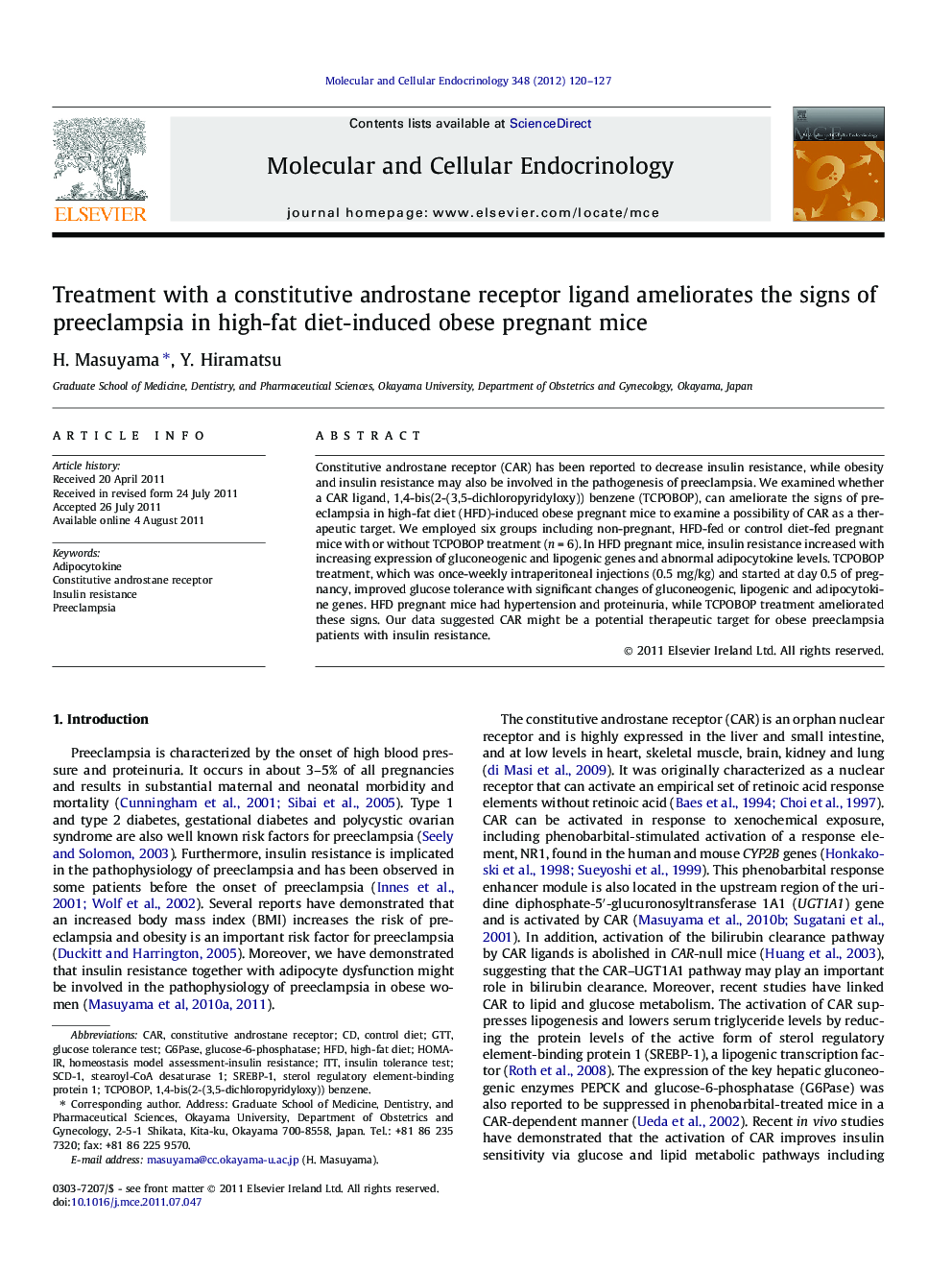| Article ID | Journal | Published Year | Pages | File Type |
|---|---|---|---|---|
| 2196507 | Molecular and Cellular Endocrinology | 2012 | 8 Pages |
Constitutive androstane receptor (CAR) has been reported to decrease insulin resistance, while obesity and insulin resistance may also be involved in the pathogenesis of preeclampsia. We examined whether a CAR ligand, 1,4-bis(2-(3,5-dichloropyridyloxy)) benzene (TCPOBOP), can ameliorate the signs of preeclampsia in high-fat diet (HFD)-induced obese pregnant mice to examine a possibility of CAR as a therapeutic target. We employed six groups including non-pregnant, HFD-fed or control diet-fed pregnant mice with or without TCPOBOP treatment (n = 6). In HFD pregnant mice, insulin resistance increased with increasing expression of gluconeogenic and lipogenic genes and abnormal adipocytokine levels. TCPOBOP treatment, which was once-weekly intraperitoneal injections (0.5 mg/kg) and started at day 0.5 of pregnancy, improved glucose tolerance with significant changes of gluconeogenic, lipogenic and adipocytokine genes. HFD pregnant mice had hypertension and proteinuria, while TCPOBOP treatment ameliorated these signs. Our data suggested CAR might be a potential therapeutic target for obese preeclampsia patients with insulin resistance.
► We examined whether CAR ligands can ameliorate the signs of preeclampsia. ► High fat diet induced insulin resistance with hypertension and proteinuria. ► CAR activation ameliorated the signs of preeclampsia with improved glucose tolerance.
